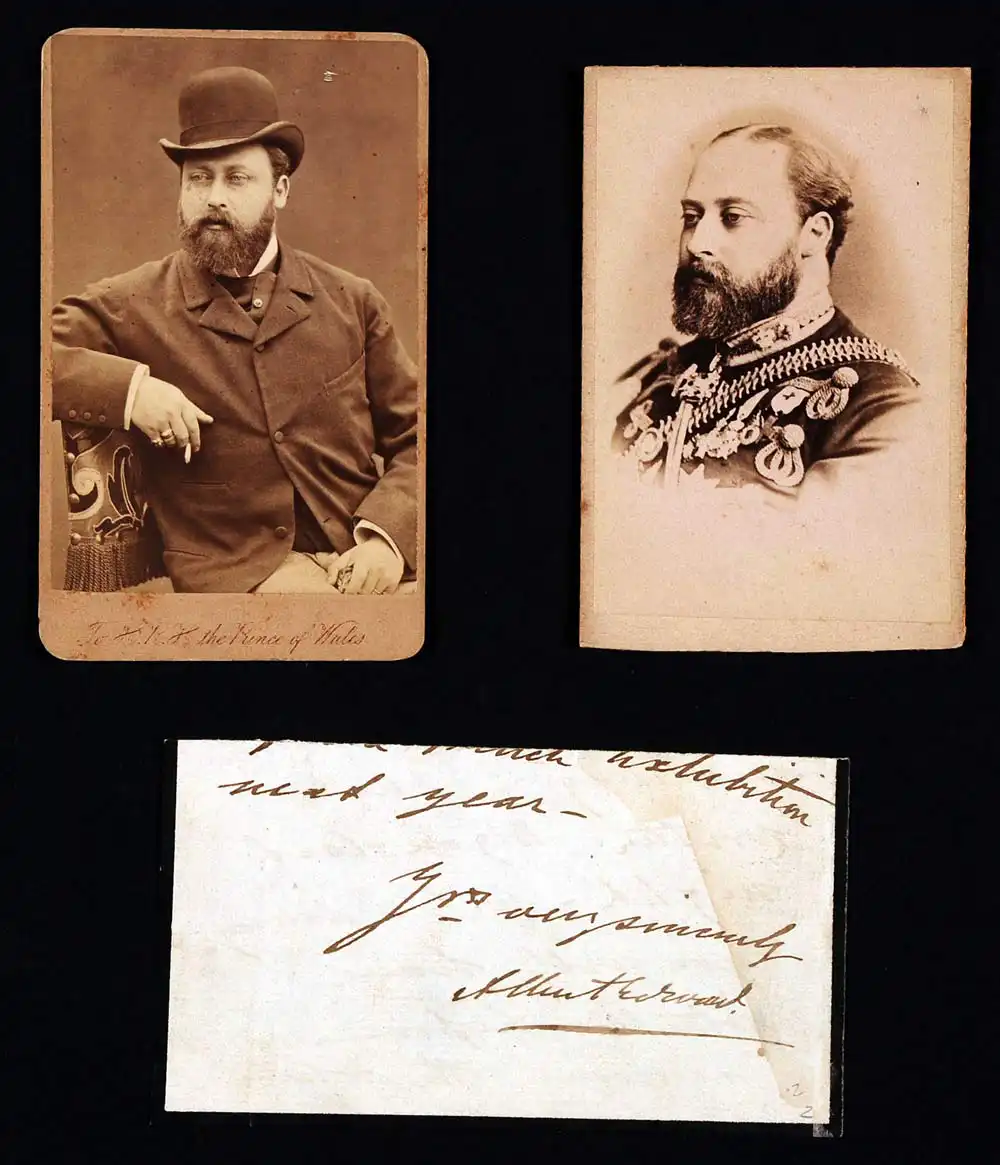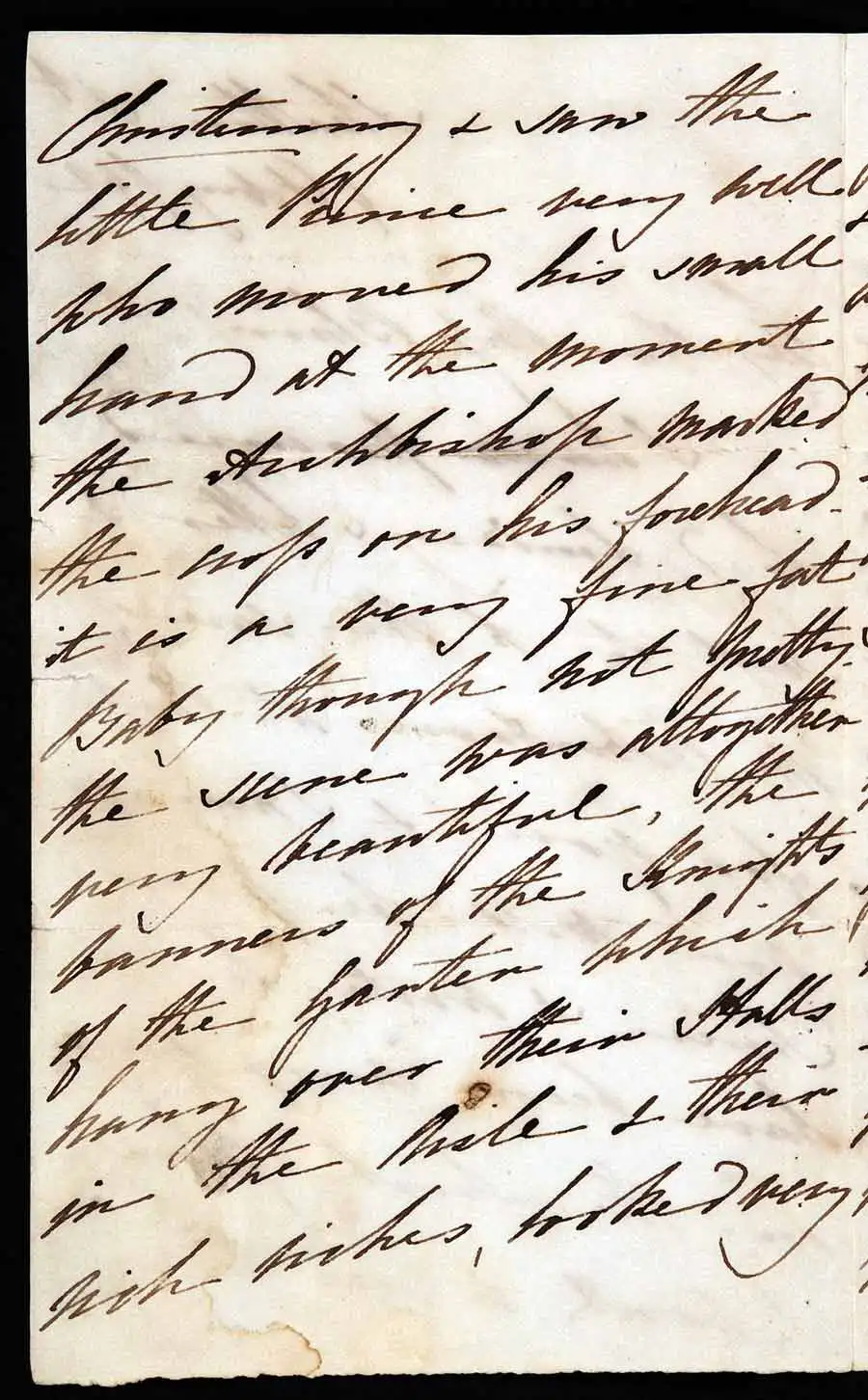Case 9
- Edward VII

Two undated cartes de visite of Edward VII, both while Prince of Wales, and signature on letter fragment.
Edward VII was the first British monarch of the House of Saxe-Coburg and Gotha, the royal house of his father Prince Albert. Before his accession to the throne on 22 January 1901, Edward held the title of Prince of Wales for longer than any of his predecessors and was in his sixtieth year when he was crowned king. During the long reign of his mother, Queen Victoria, he was largely excluded from political power and came to personify the fashionable, leisured elite.
The Edwardian era coincided with the start of a new century and heralded significant changes in technology and society. Edward fostered good relations between Great Britain and other European countries, and concluded the Entente Cordiale with France, a diplomatic move that earned him the name of ‘Edward the Peacemaker’. His ebullience was a welcome relief after the drab years of the latter half of his mother’s reign. However, with Edward’s death in May 1910, many realised it was only a matter of time before the peace he worked so hard to maintain would be broken.

Two undated cartes de visite of Edward VII, both while Prince of Wales, and signature on letter fragment.
Open image in new window

Partial letter. Angela Burdett-Coutts (1801–1899), 1 Stratton Street, London, 4 February 1842.
Despite this letter being incomplete, evidence (such as the address and handwriting) suggests it was written by the banker and philanthropist Angela Burdett-Coutts. While not a member of the royal family, the baroness was a close friend to Queen Victoria. She attended Victoria’s coronation in June 1838. The Queen and other members of her family were customers of Coutts & Co. Bank, and they also called on Burdett-Coutts in her home.
The baroness’s 4 February 1842 letter offers a descriptive account of the christening of Albert Edward, the future Edward VII (1841–1910). In the left-hand page exhibited, Burdett-Coutts wrote of the occasion that she ‘saw the little Prince very well, who moved his small hand at the moment the Archbishop marked the cross on his forehead. It is a very fine fat Baby though not pretty’. The letter continues with a general description of the scene, which Burdett-Coutts called ‘altogether very beautiful, the banners of the Knights of the Garter which hang over their stalls in the aisle ... looked very gorgeous, & the Archbishop & the other Bishops formed a fine background, whilst the Queen in her robes & jewels & Prince Albert [stood] on one side, & the sponsors on the other of the font’.

